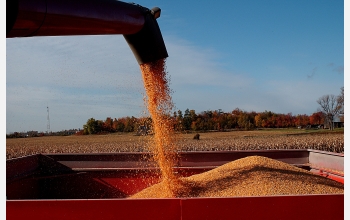All Images


Press Release 08-029
All Eyes and Ears on the Corn Genome

NSF-supported researchers complete draft sequence in less than three years
Back to article | Note about images
 |
In 2005, NSF, DOE, and USDA funded the sequencing of the corn genome. Researchers for the sequencing project are from Washington University, Cold Spring Harbor Laboratory, Iowa State University, and the University of Arizona.
Credit: © 2008 Jupiter Images Corp. |
 |
Corn ranks among the world's major grain crops and dominates American agriculture. In 2007, U.S. farmers produced a record 13.1 billion bushels of corn, an increase of nearly 25 percent over the previous year, according to the U.S. Department of Agriculture. The production value of the 2007 crop was estimated at $3.3 billion. Favorable prices, a growing demand for ethanol and strong export sales have fueled an increase in farmland acreage devoted to corn production.
Credit: © 2008 Jupiter Images Corp. |
 |
Corn, also known as maize, is used to produce a myriad of products, from breakfast cereal, meat and milk to toothpaste, shoe polish and ethanol.
Credit: Nicolle Rager Fuller, National Science Foundation |
 |
To sequence the maize genome, scientists first collect and purify DNA from maize plants in the laboratory. Purified DNA is "chopped up" to produce DNA small enough to analyze. A sequencing machine determines the actual order of about 1,000 DNA bases (abbreviated G, A, T, or C) at a time. By analyzing the sequence data with sophisticated computer programs, the fragments can be aligned by overlapping their ends. Repeated sequences throughout the genome make it difficult to match up the correct pieces. When the project is completed, researchers will know the sequence of all 2.5 billion DNA bases in the maize genome.
Credit: Nicolle Rager Fuller, National Science Foundation |
Download the high-resolution JPG version of the image. (253 KB)
|
Use your mouse to right-click (Mac users may need to Ctrl-click) the link above and choose the option that will save the file or target to your computer.
|
|





